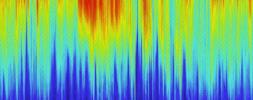The SNMREC Preferred Partner Program is an opportunity for our industry partners to collaborate more fully with the Center. This program is designed to dedicate SNMREC experts and resources to individual industry partner development needs.
Frequently Asked Questions
Download a copy of the current FAQ or browse below:
What resources is the SNMREC researching?
How is power harnessed from MHK resources?
Is the SNMREC going to generate power?
What is an MHK Testing Facility?
Are you designing and fabricating turbines in your laboratory?
What is the size of the research turbine and its blades?
What will the SNMREC turbine, and others to be tested, do to sea life?
What will the SNMREC turbine, and others to be tested, do to the Gulf Stream?
What is “ocean energy”?
“Ocean energy” generally refers to sources of renewable energy available from the oceans; the more technical term is “marine renewable energy” or “ocean renewable energy.” Often, these resources are grouped as either Marine Hydrokinetic (MHK) energy or gradient potential energy. MHK energy is found in several forms like waves, tidal flows (such as those in and out of inlets on the Intracoastal Waterway), and open-ocean currents. Gradients, or differences of a particular water property throughout the water column, like temperature (Ocean Thermal Energy Conversion - OTEC) or salinity (differences in salt concentrations between the surface and bottom), also contain vast amounts of potential energy useful for generating electricity.
What resources is the SNMREC researching?
The SNMREC is initially studying the potential of the Florida Current, an open-ocean current MHK energy resource that is part of the larger Gulf Stream System of currents in the North Atlantic Ocean (waves and tides are not strong enough in Florida to justify investment in grid-scale production, unlike in New England, the Pacific Northwest, Hawai`i, and Alaska). The SNMREC has also been measuring temperature gradients off the southeast coast of Florida which appear be ideal for OTEC generation.
How is power harnessed from MHK resources?
The force of moving water, whether it’s a current or the ocean’s surface moving up and down in waves, is used to drive machinery, which, one way or another, generates electricity. The simplest to visualize is a tidal current generator: just think of an underwater wind turbine. Because water is nearly a thousand times heavier than air, a 1 knot current has the power of winds blowing at 10 mph or so. However, in the deeper water offshore SE Florida, where the Florida Current is, using “underwater wind turbines” with towers is not feasible. But, it’s possible to design machines that are anchored and “fly” in the current, like kites in the wind.
Is the SNMREC going to generate power?
The companies that are designing equipment to convert energy of the Florida Current into electricity using underwater turbines need a facility to demonstrate prototypes of their designs. These early concepts are intended to provide valuable insights for constructing full sized units that might some day be installed to produce utility-scale electricity for our grid. The SNMREC is building an offshore MHK testing facility to accommodate these demonstration projects. Any electricity generated by these small-scale machines (less than 100 kW of max capacity) will be not be transmitted to shore. Instead, it will be used to run equipment used for testing and the rest dissipated as heat.
What is an MHK Testing Facility?
The SNMREC’s vision of an MHK testing facility takes the form of anchored buoys to which work boats can tie up and test demonstration turbine systems, called test berths. To adequately describe the performance of turbines, the testing facility must also include various real-time measurements of the environment. Therefore, underwater scientific sensors will simultaneously monitor properties like the water’s speed and direction. These berths will be located about 13 miles offshore Ft. Lauderdale, Florida where the water is approximately 850 feet deep.
Are you designing and fabricating turbines in your laboratory?
Although the SNMREC is not designing or building commercial turbines, its engineering team has constructed a small research turbine to collect generic performance data invaluable to commercial manufacturers, to test components, and to inform international technical standards development. The in-house turbine is constructed from “off the shelf” parts to resemble major features of its commercial cousins and will help the SNMREC refine specialized procedures for testing these systems offshore.
What is the size of the research turbine and its blades?
The SNMREC will be capable of testing demonstration systems with rotors up to about 22 feet in diameter (so the blades will be about 11 feet long). The first turbine that SNMREC will test, the in-house research unit, has a 10-foot-diameter rotor. Full-scale commercial systems on the drawing boards at various companies have rotors with diameters over 100 feet! Because the density of water compared with air is so much greater, rotors won’t have to spin quickly to generate the same power as wind turbines. For example, the SNMREC’s research turbine will make a full turn every second while larger commercial systems will spin slower, approximately once per minute!
What will the SNMREC turbine, and others to be tested, do to sea life?
We cannot be certain about how marine critters will interact with any turbine until one is operating in the water, but evidence and intuition suggest that they can co-exist. Full scale tidal turbines have been installed in various locations around the world (Bay of Fundy, New York City, the United Kingdom, and Maine) with no observable harm to marine life. Fish, and most marine mammals, can swim much faster than turbines rotate (at least for short bursts) and can detect this equipment before they get too close. However, the SNMREC’s goal is to ensure MHK is developed responsibly, so various studies are underway to observe any effects. The safety of sea turtles is of particular concern, and we have been carrying out an extensive program of research on sea-turtle distributions and behavior. We will also be watching for them during turbine tests and will be prepared to shut down the equipment if one appears to be at risk.
What will the SNMREC turbine, and others to be tested, do to the Gulf Stream?
The Gulf Stream can be imagined as a large river flowing past Florida (actually, all freshwater river discharge into the world’s oceans, combined, and counted almost 30 times!). In the future, when large-scale commercial-scale deployments composed of many turbines to generate power-plant quantities of electricity are installed, studies show that only a small fraction (less than 2/10th of a percent) of the total energy can be practically accessed. Because there is so much total energy available, however, that is equivalent to almost ten nuclear power plants (~20 GW), like south Florida’s Turkey Point facility (gross electrical capacity of reactors 3 and 4: a total of ~1.5 GW). How some of the technical challenges that remain are overcome and the quantity of commercial turbines installed will indicate if any measurable effects can be determined.



